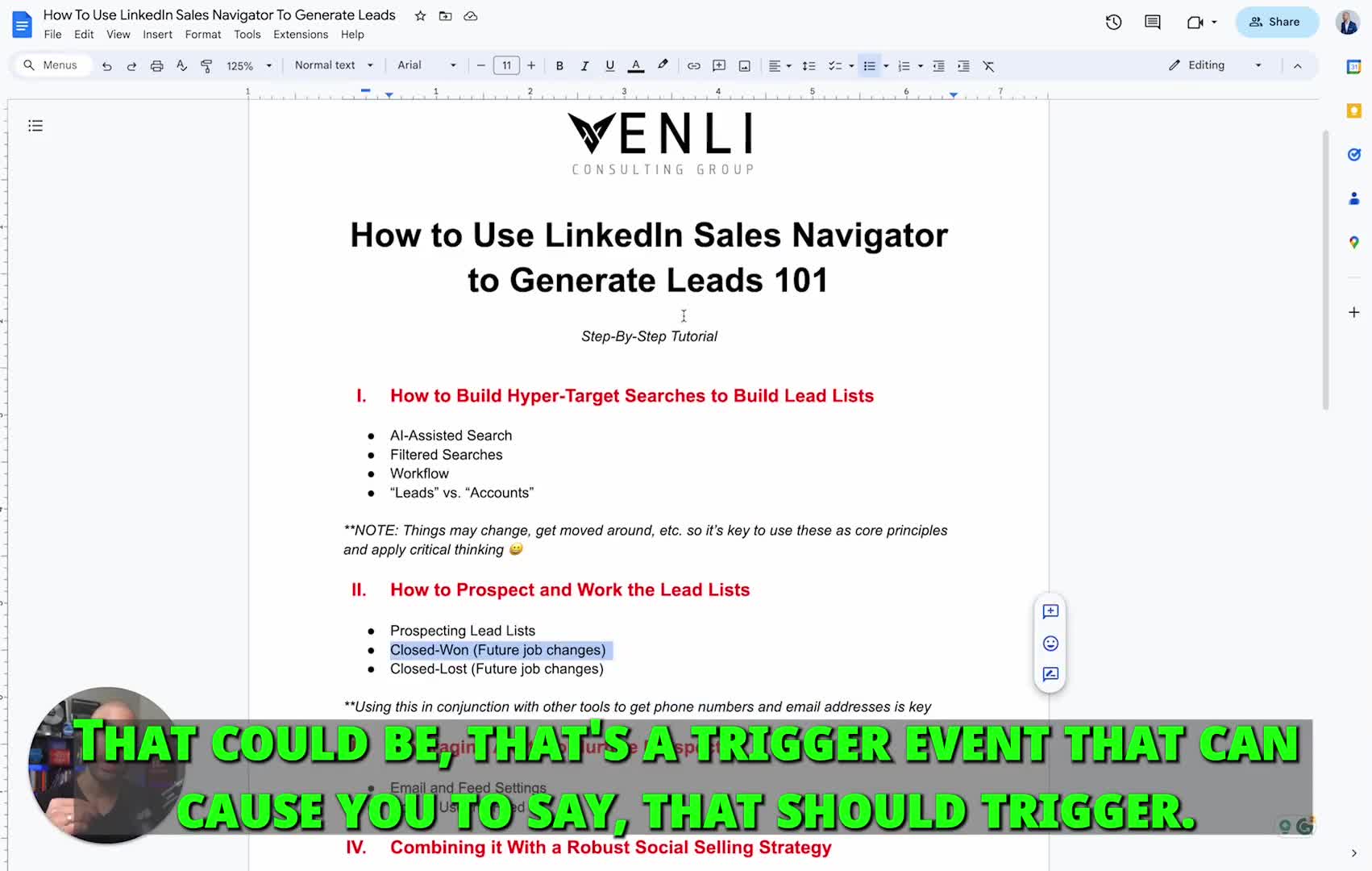Relationship Dynamics
What is the 90-day framework for building relationships on LinkedIn?
Morgan J. Ingram outlines a strategic 90-day framework for building meaningful relationships on LinkedIn. The first 30 days focus on consistent engagement with potential connections' content - commenting, liking, and staying top-of-mind through quality interactions rather than asking for favors too soon. The second 30 days involve starting meaningful conversations about topics your connections are engaging with. This doesn't mean immediately jumping into direct messages requesting meetings, but rather asking relevant questions about their content to deepen the relationship naturally. In the final 30 days, you can explore opportunities for collaboration, meetings, or other valuable interactions once you've established trust. This patient approach leads to more genuine relationships that could connect you to potential clients, even if the person themselves isn't a direct prospect.
Watch clip answer (02:29m)How can you effectively find and contact people who are most likely to support your brand?
The most effective approach is to start with your closest relationships. Begin by identifying who you communicate with most frequently - reviewing text messages can serve as a filter to determine your closest friends and family members. These 10-50 people are most likely to become evangelists for your brand and actively support your initiatives. After establishing this core group, you can expand to a broader network of 100-200 regular contacts. This strategy makes sense because those with whom you have the strongest relationships are naturally more inclined to help promote your brand. Personal connections are the foundation of effective brand evangelism.
Watch clip answer (00:52m)What are the four key components of the LinkedIn Social Selling Index (SSI)?
The LinkedIn Social Selling Index consists of four key components: establishing a professional brand, identifying the right connections, engaging with insights, and building meaningful relationships. Maintaining a high SSI score through consistent activity can place users in the top percentile of their industry peers. This is achieved by posting relevant content, engaging with others' content, optimizing your LinkedIn profile, and cultivating a community. The speaker attributes their top 1% ranking to these consistent practices, which have directly contributed to their business growth.
Watch clip answer (01:14m)What are effective follow-up strategies to increase sales conversions?
Effective follow-up strategies include understanding that most prospects require nurturing rather than immediate decisions, mapping out a structured follow-up process with specific messaging for each step, and automating as much of the process as possible while maintaining personalization. Timing is crucial - follow up immediately after initial contact and consistently during the first seven days. Creative approaches like using social proof, sending personalized memes, anniversary gifts, and snail mail can significantly differentiate your outreach. These strategies work because they maintain prospect engagement, build trust, and keep you top-of-mind, ultimately leading to higher conversion rates.
Watch clip answer (00:57m)How can we understand authentic selfhood in a dialogical context rather than as an individualistic pursuit?
According to Yale lecturer Matthew Croasmun, authentic selfhood isn't discovered in isolation but formed through dialogical relationships with significant others. He challenges the notion that we are self-standing individuals, emphasizing that our selves are historically situated and constantly being formed through community. True authenticity involves recognizing that we are interconnected beings whose identities emerge through meaningful relationships with others. Rather than projecting ourselves to the world as isolated individuals, ethical authenticity requires us to acknowledge our shared horizons of significance and engage in the work of recognition with others, which may ultimately lead us to discover our unique vocations and callings.
Watch clip answer (03:02m)What are the key best practices for managing quality in construction projects?
Contractors should establish robust quality standards and controls that exist throughout the entire project lifecycle, from inception through completion and into the warranty period. These standards should prioritize client satisfaction alongside financial considerations. While making money is critical, maintaining quality must be done in a manner that fosters positive client relationships for long-term business success. Effective quality management includes thorough communication within the firm and conducting post-project evaluations to capture lessons learned. Construction firms benefit from implementing internal peer reviews where team members from other projects can provide fresh perspectives on quality issues. This sharing of expertise and best practices helps prevent repeated mistakes and strengthens quality standards across the organization.
Watch clip answer (02:58m)




